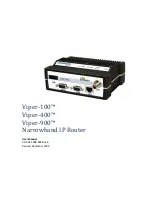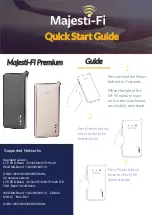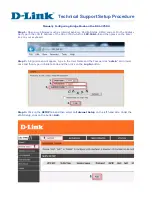
IMPORTANT NOTICE
Because of the nature of wireless communication, transmission and reception of data can never
be guaranteed. Data may be delayed, corrupted (i.e., have errors), or be totally lost. Significant
delays or losses of data are rare when wireless devices such as the Viper are used in a normal
manner with a well-constructed network. Viper should not be used in situations where failure to
transmit or receive data could result in damage of any kind to the user or any other party,
including but not limited to personal injury, death, or loss of property. CalAmp accepts no
responsibility for damages of any kind resulting from delays or errors in data transmitted or
received using Viper, or for the failure of Viper to transmit or receive such data.
COPYRIGHT NOTICE
© Copyright 2007 CalAmp.
Products offered may contain software proprietary to CalAmp. The offer of supply of these
products and services does not include or infer any transfer of ownership. No part of the
documentation or information supplied may be divulged to any third party without the express
written consent of CalAmp.
RF EXPOSURE COMPLIANCE REQUIREMENTS
The Viper radio is intended for use in the Industrial Monitoring and Control and
SCADA markets. The Viper unit must be professionally installed and must ensure a
minimum separation distance listed in the table below between the radiating
structure and any person. An antenna mounted on a pole or tower is the typical
installation and in rare instances, a 1/2-wave whip antenna is used.
Antenna Gain
5 dBi
10 dBi
15 dBi
Min Safety Distance
(VHF @ max Power)
123cm 218.8cm 389cm
Min Safety Distance
(UHF @ max Power)
105.7cm 188cm 334.4cm
Min Safety Distance
(900 MHz @ max power)
63.8cm
115 cm
201.7 cm
Note: It is the responsibility of the user to guarantee compliance with the FCC MPE
regulations when operating this device in a way other than described above.
The Viper radio uses a low power radio frequency transmitter. The concentrated energy from an
antenna may pose a health hazard. People should not be in front of the antenna when the
transmitter is operating.
The installer of this equipment must ensure the antenna is located or pointed such that it does
not emit an RF field in excess of Health Canada limits for the general population. Recommended
safety guidelines for the human exposure to radio frequency electromagnetic energy are
contained in the Canadian Safety Code 6 (available from Health Canada) and the Federal
Communications Commission (FCC) Bulletin 65.
Any changes or modifications not expressly approved by the party responsible for compliance
(in the country where used) could void the user's authority to operate the equipment.



































